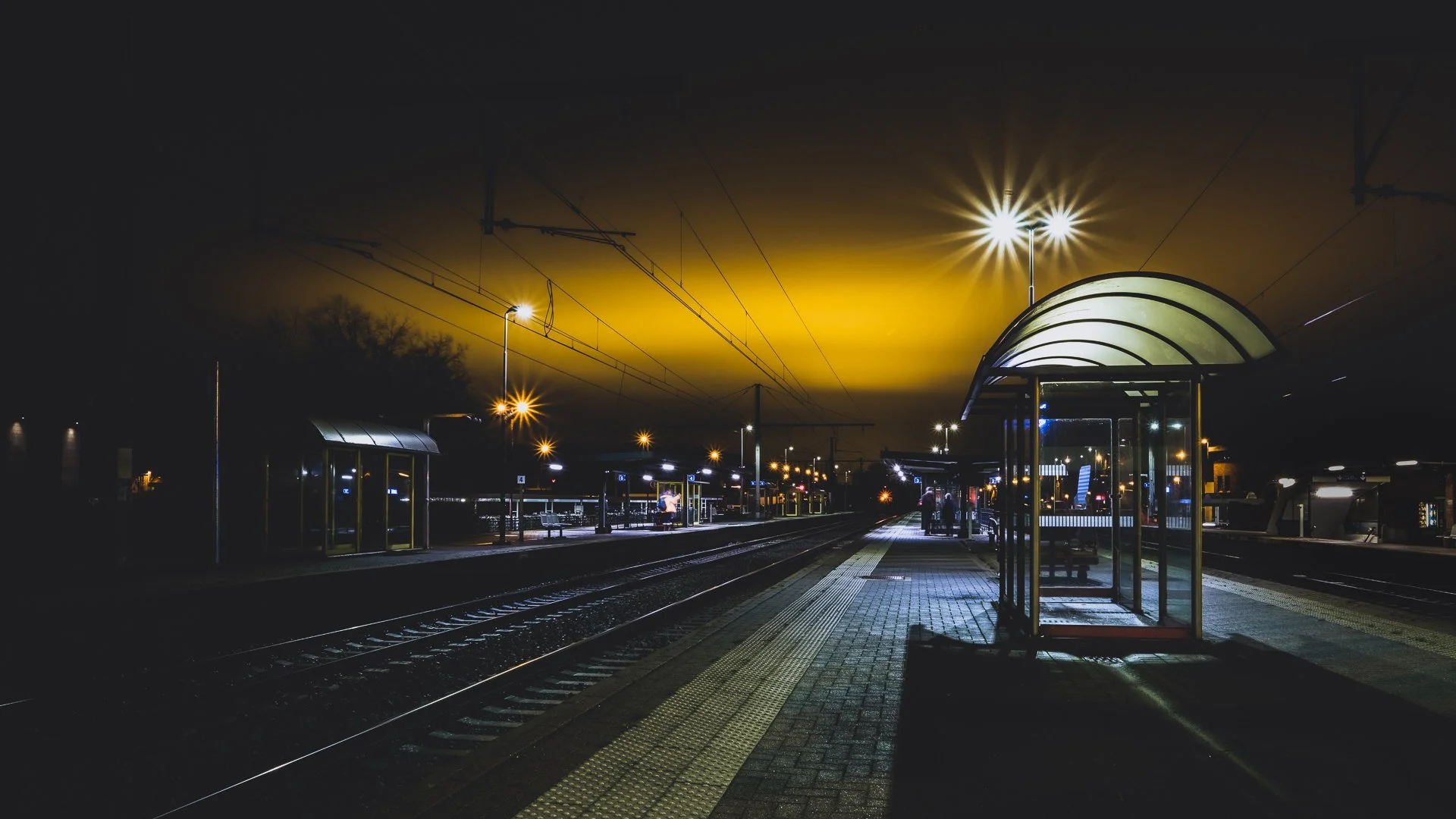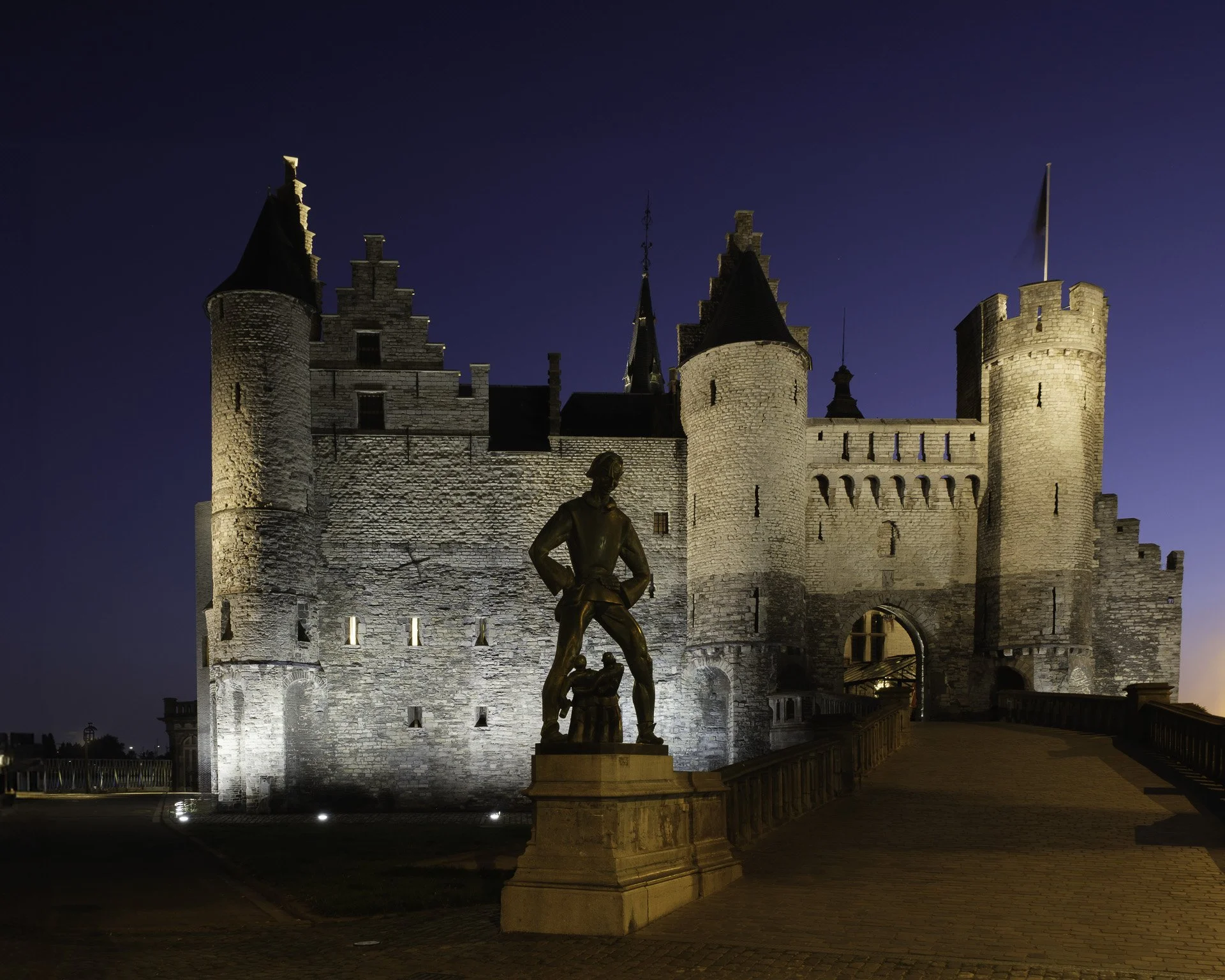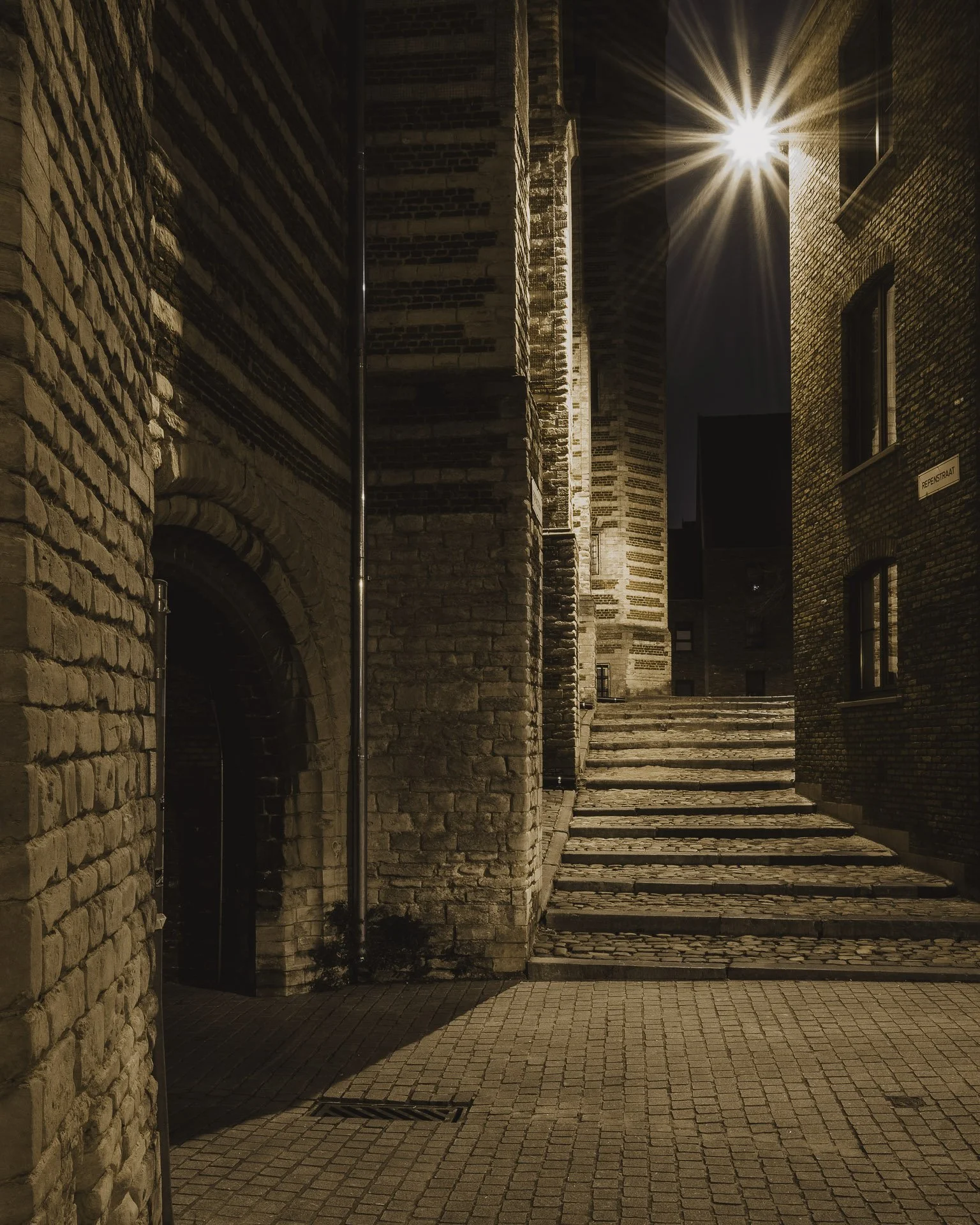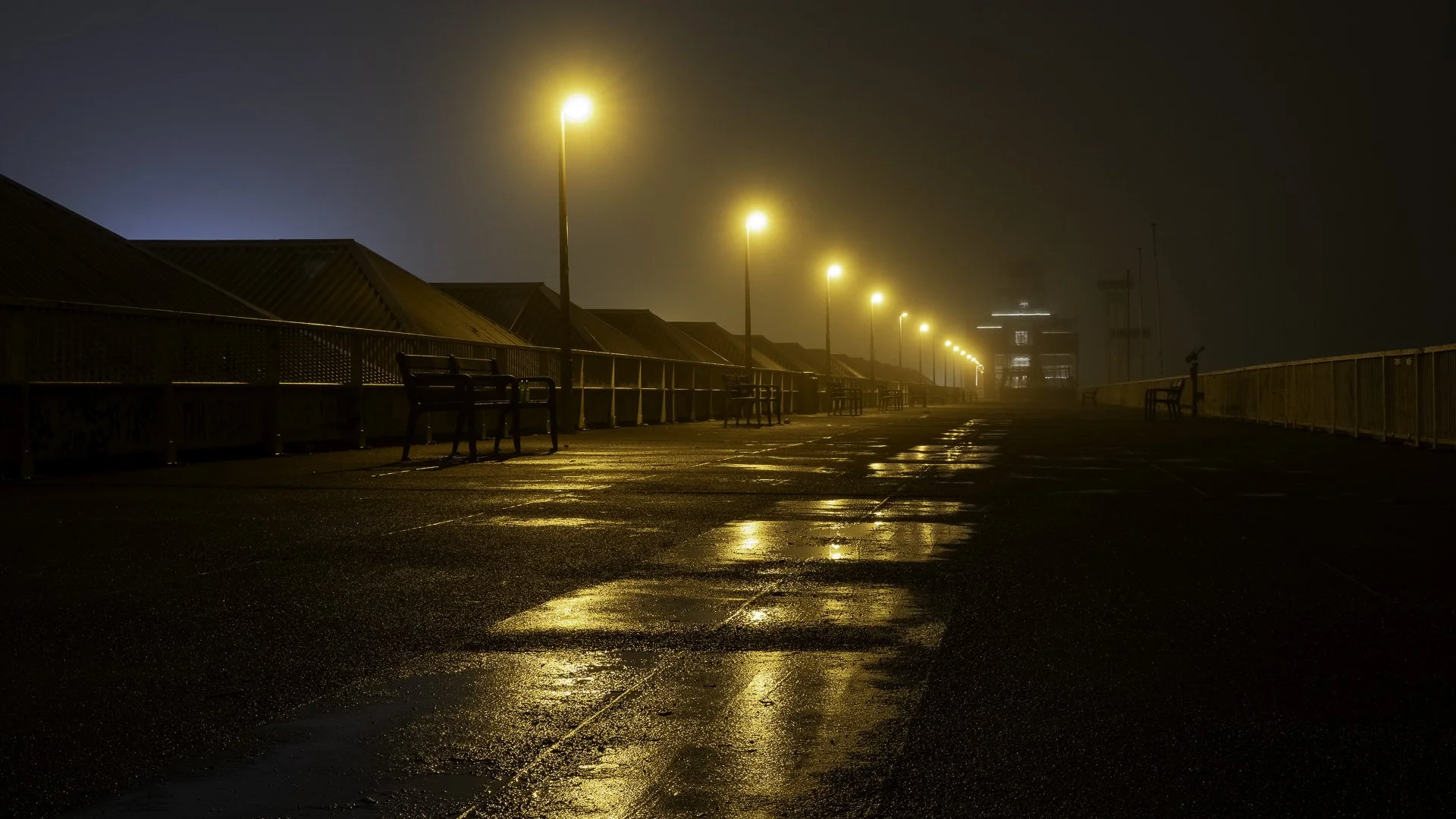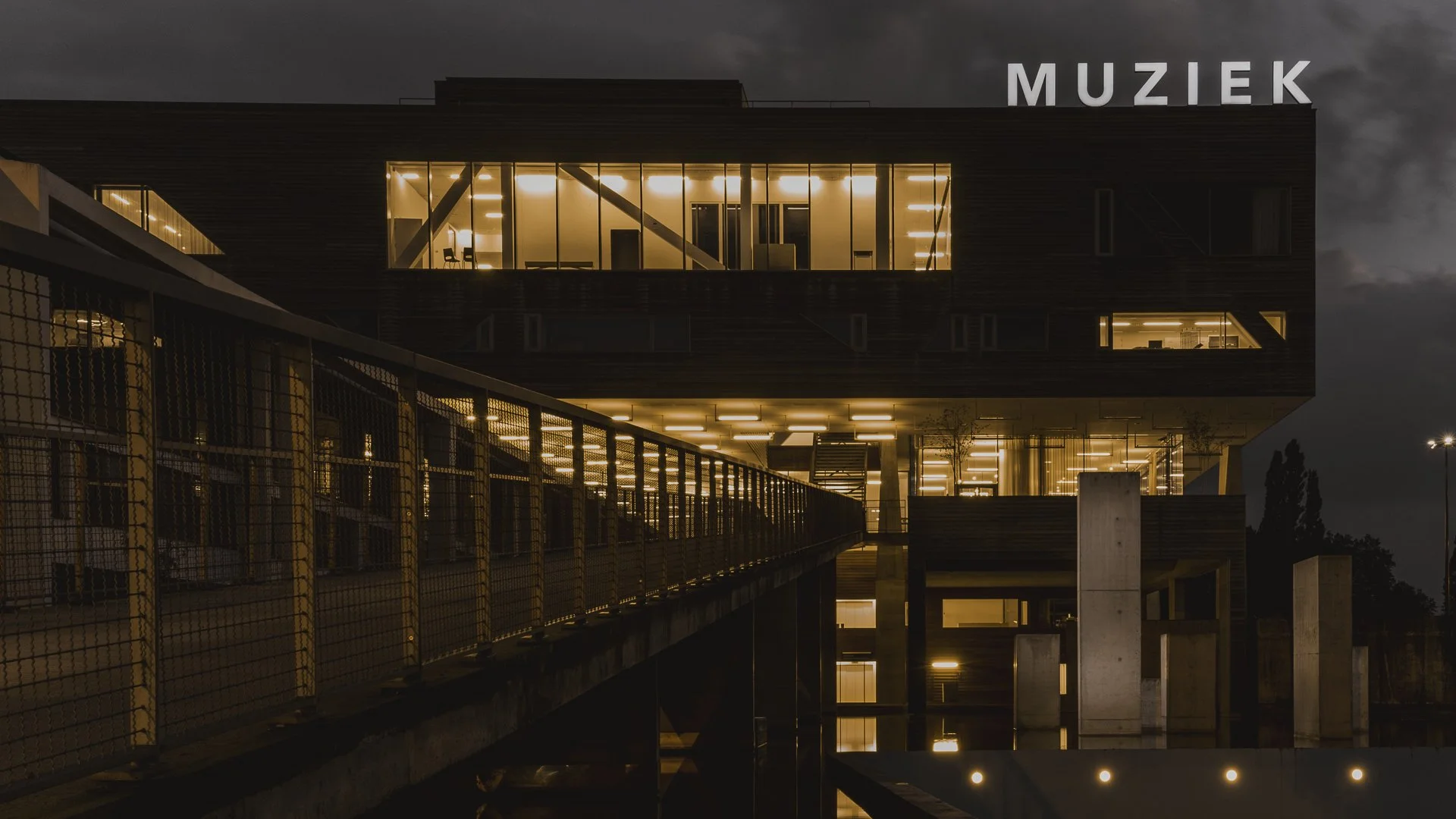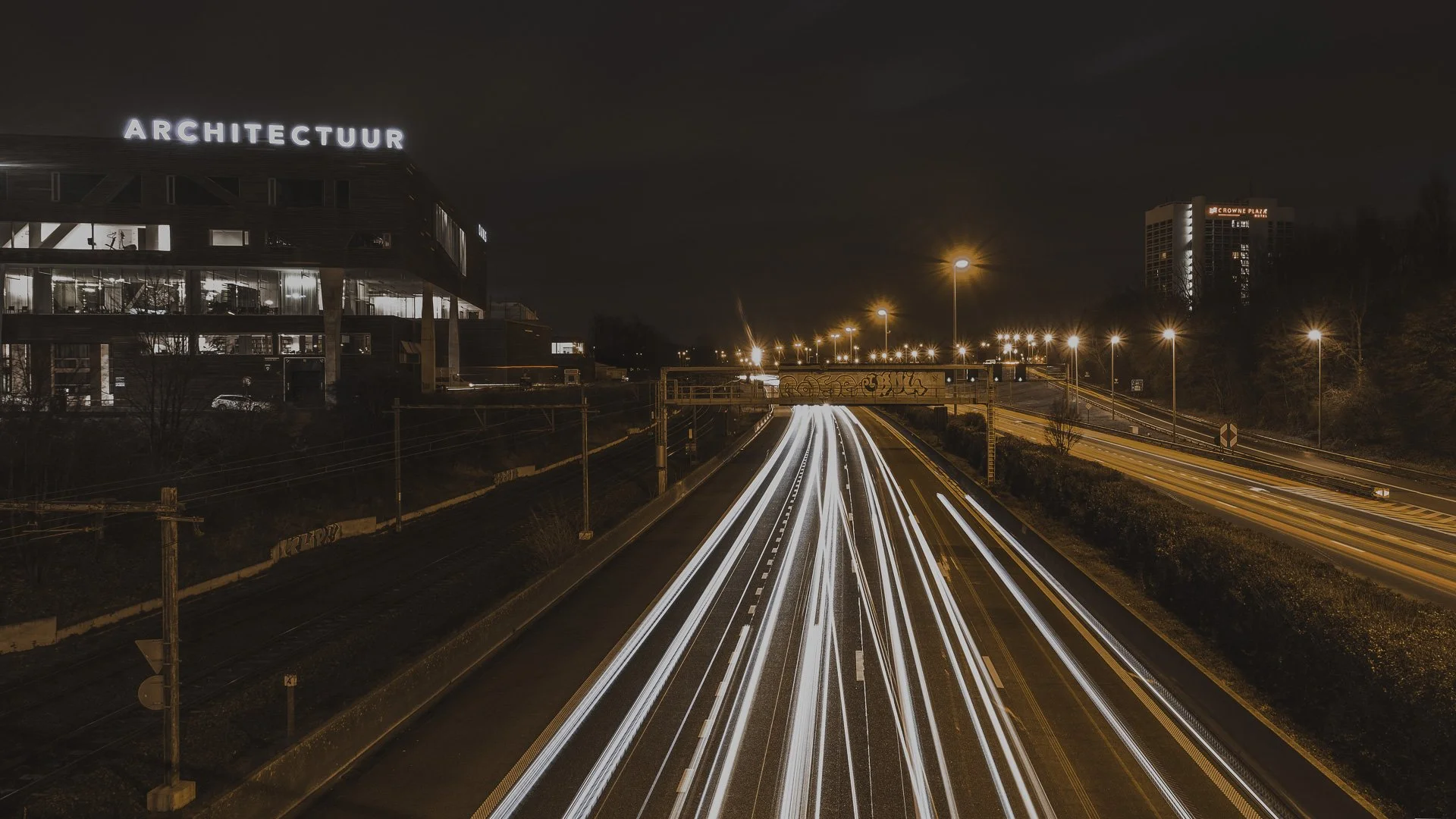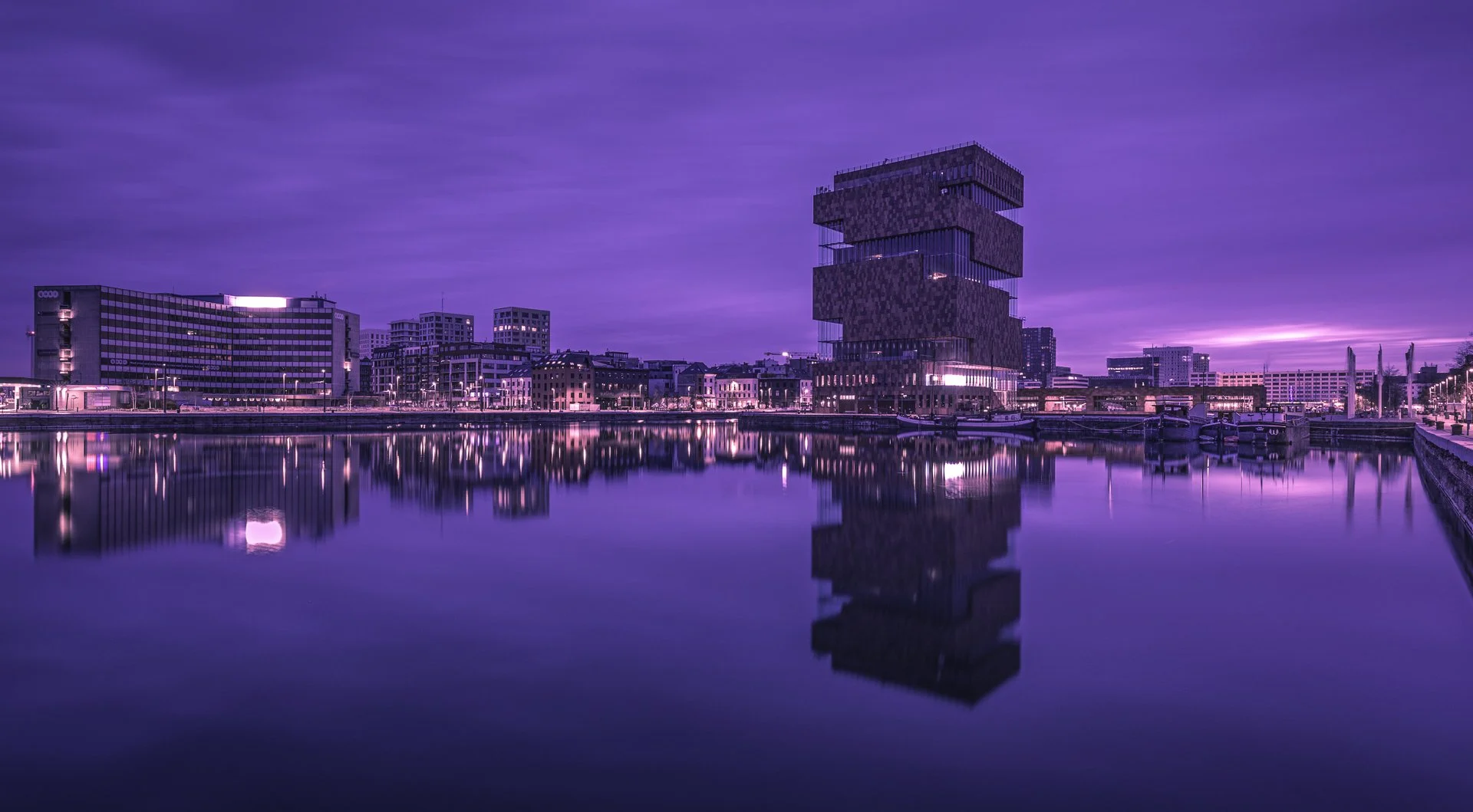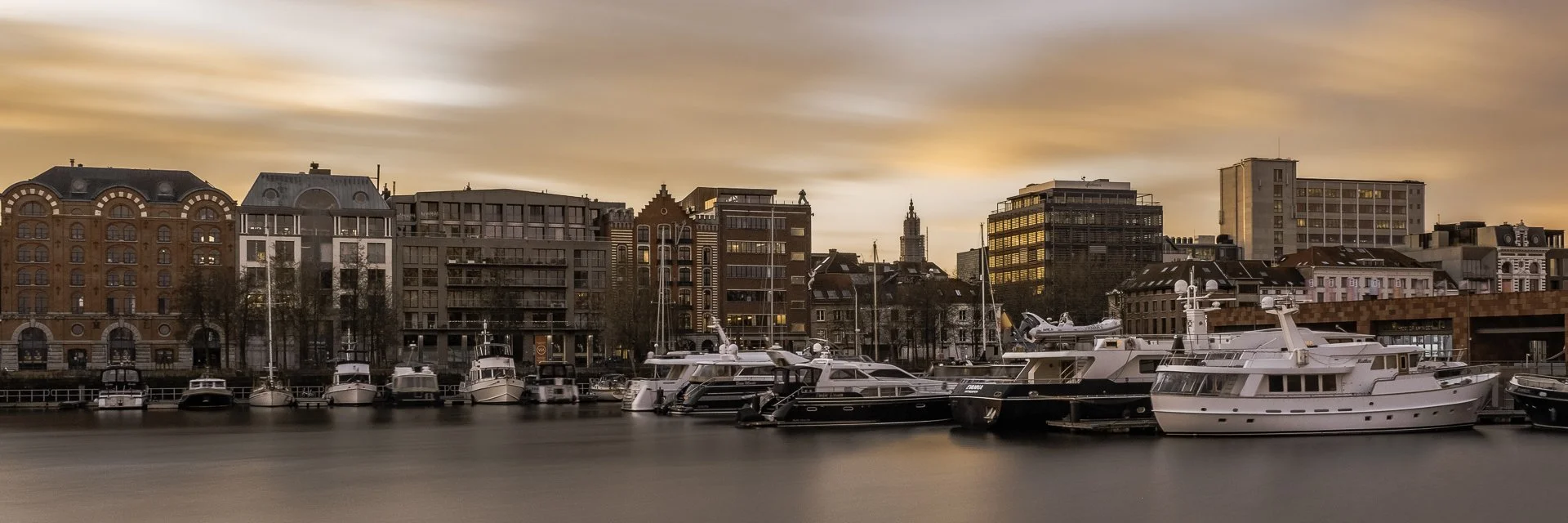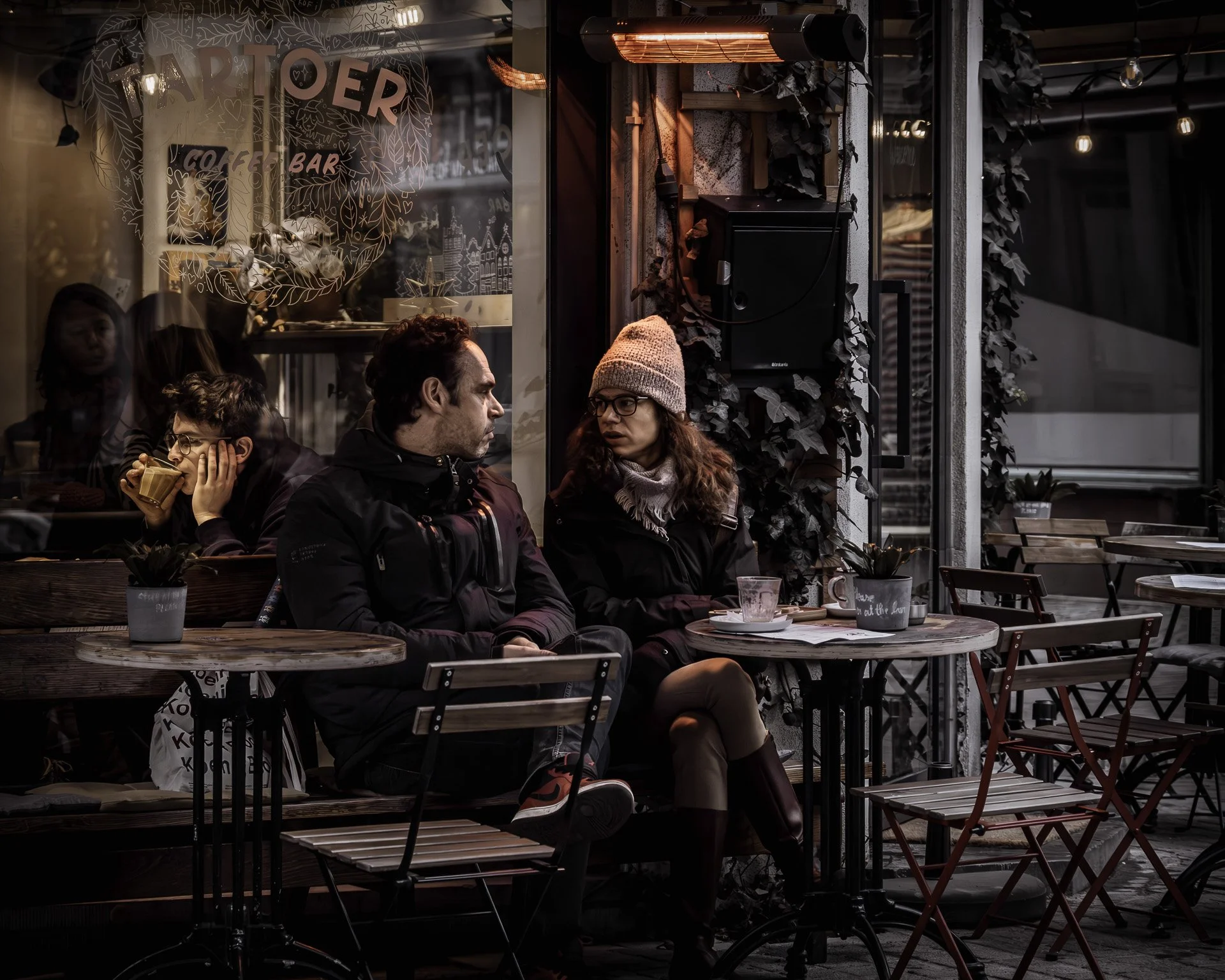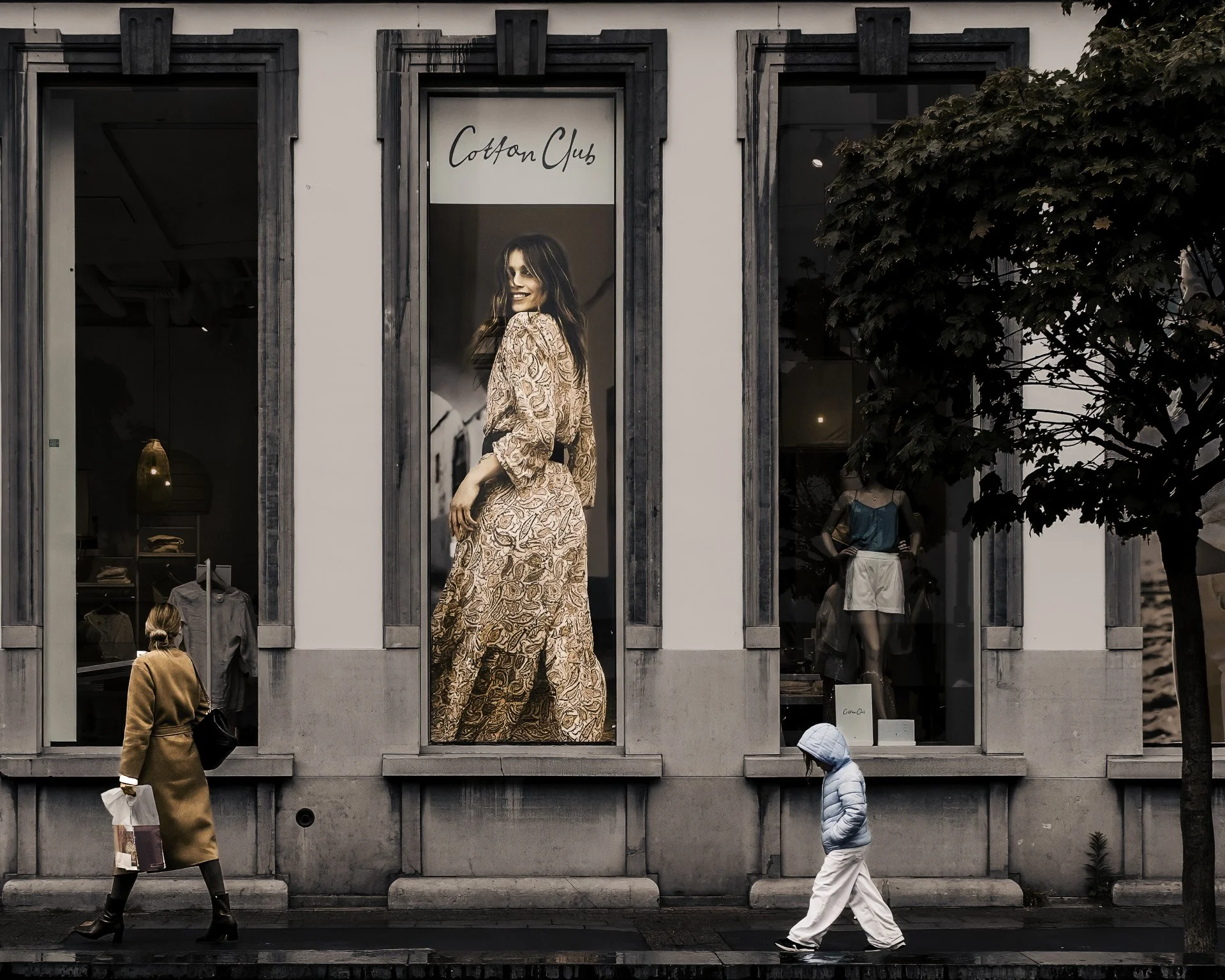By train to Antwerp!
One advantage of living in Kontich is that you can easily go 'smart to Antwerp'. A train leaves every half-hour and takes you to Central Station after 19 minutes of track time.
The train arrives quietly, its headlights slicing through the early morning darkness. I take my seat, listening to the steady clack of the wheels like a musical backdrop for my thoughts. Excitement bubbles inside me; soon, the colorful scene of Antwerp will come alive.
As the countryside flies by, I watch the world wake up. Far-off towns look like sleepy giants stretching, while I get my gear ready for the photo opportunities ahead. Each tick of the clock brings me closer to capturing the vibrant lights of the city—a lively mix I want to showcase in all its quirky charm.
When I reach Central Station, the stunning architecture welcomes me joyfully. I step onto the platform, inhaling the fresh morning air—there's magic in the stillness before the day begins. My camera feels like a reliable friend, eager to capture the shimmering reflections on the cobblestones and the warm glow of shop windows. It’s time to let my inner night owl shine and create some light-filled memories in the heart of the ‘Biscuit City’*.
* Antwerp is nicknamed ‘Biscuit City’ because there used to be as many as twenty biscuit factories in Antwerp, including De Beukelaer, Biscuits Parein and Biscuits Phoenix! And still a lot of biscuits go around in Antwerp: just think of Antwerp's little hands, the city's speciality.
There is no time to waste! I have drawn up an ambitious plan that includes several photo locations scattered around the city. So these 'must' be photographed before the sun rises. With a energetic gait (many fast walkers would envy it 😊), I set the pace towards my first location, ‘Het Steen’. Via Keizerlei, Meir and Groenplaats, 20 minutes later I am at the city's oldest preserved building. ‘Het Steen’ was built in the early 13th century as the gatehouse of the then Antwerp castle. Over the centuries, it was regularly rebuilt and had various uses. Prison, home for disabled soldiers, residence, sawmill, fish depot, museum. Today it houses the tourist visitor centre and is definitely worth a visit.
Opposite 'Het Steen' is the ‘Vleeshuis' (also known as the Butcher's Hall), another monumental building. After all, here I am in the historic centre.
The 'Vleeshuis' was originally constructed in 1504 as a guild hall for the city's butchers. It served also as a central market for meat, a crucial commodity in medieval and Renaissance Antwerp. It was built in just three years and hardly changed in more than five centuries. The building is a prime example of Gothic architecture. Its imposing structure, with high ceilings and large windows, reflects the prosperity and importance of the butchers' guild during its time.
Today it is a museum bringing to life 600 years of sound, music and dance in Antwerp.
After a brief shower of rain, taking a 'moody' snapshot of the nearby and protected walkers' terrace north.
The construction of the canopies on the Scheldt quays circa 1884 obscured the Scheldt from the view of walkers. Therefore, the elevated rambling terraces north and south were erected. Both terraces end at a pavilion. The northern one houses restaurant RAS.
And now sito presto by a 'veloke' (the shared bicycles available all over the city) to the arts centre DE SINGEL.
According to the mission statement on their website, "DE SINGEL is a welcoming art house, a meeting place for art without borders in a world in change. In a unique building and on a multi-faceted arts site, DE SINGEL connects communities with artists and art practices from around the world. ...”
If you love theatre, dance, music or architecture then this is without a doubt 'the place to be'.
My next stop on the schedule is The Little Island, the old port area. The real port activities may have disappeared there today, but for me it is one of the nicest places to hang out. With the MAS (Museum aan de Stroom), the Red Star Line Museum and the Port House, this neighbourhood also has a lot to offer.
It is gradually becoming clear to me that I have overestimated myself and probably won't manage to photograph all the 'hot spots' on my list. But I am not giving up yet! Full of energy, I jump back on a share bike and pedal my lungs out (with my photo bag on my back) to arrive at the Harbour House more than twenty minutes later.
The Harbour House in Antwerp, known as the "Port House" (or "Havenhuis" in Dutch), is one of the city’s most iconic and distinctive buildings. Designed by the late Zaha Hadid, the structure is a striking blend of old and new, seamlessly integrating a historic fire station with a modern architectural addition.
The lower part of the building is a former fire station, constructed in a traditional, neoclassical style. This historic structure forms the base, anchoring the building in Antwerp’s rich maritime heritage.
Above it, a futuristic, diamond-shaped glass structure seems to float, offering a sharp contrast to the traditional architecture below. This modern superstructure, with its faceted glass façade, resembles the hull of a ship or the facets of a diamond, paying homage to both Antwerp's maritime legacy and its status as the world’s diamond capital. The building's unique form is also designed to reflect light and the surrounding water, creating a dynamic interplay of reflections and views.
The Harbour House serves as the headquarters for the Port of Antwerp’s administrative offices, symbolizing the city's connection to its port, which has been a vital hub of international trade for centuries. The building represents the fusion of tradition and innovation, capturing Antwerp's readiness to embrace the future while respecting its storied past.
An unusual building opposite the MAS is the listed neo-Gothic Pilotage Building, which dates back to the 19th century. It housed the pilots' administrative services but they moved to another location in 2017. Since then, the building has also been empty, serving only as a temporary exhibition space.
The Loodswezen building will be restored and redeveloped into a Flemish Culinary Centre, the Smaakhaven.
Tourism Flanders and AG Vespa are working together to realise a programme that will contribute to the development of a future-proof culinary centre. The Smaakhaven will be the home port of gastronomic Flanders for the promotion and support of our food culture. De Smaakhaven is committed to connecting the various target groups, disciplines and activities involved with our local, Flemish food culture.
The appointment procedure for the design team is currently under way, after which the study and design phase will begin. Work is scheduled to start in 2027. The Smaakhaven is scheduled to open in 2030.
According to my PhotoPills app, still a good half-hour before the sun rises. My next stop will then unfortunately also be my last ‘city lights’ location for the day. The Grote Markt with the Bravo fountain, Groenplaats, the cathedral, the Handelsbeurs... will be for another shoot.
A beautiful skyline can be discovered from the Bonapartedok, with the MAS as the eye-catcher.
The order to build these docks (today's Bonaparte and Willemdok) was given by Napoleon more than 200 years ago. The Southern Netherlands were then annexed to France.
I can conclude my intense Antwerp photo adventure at the Willemdok with a beautiful sunrise. Time for a well-deserved cappuccino!
The walk back to the station proceeds at a much more sedate pace, while I venture to do some ‘street photography’ (a discipline much more difficult for me than what it seems at first sight).
After strolling around the city some more, I decide to go back to Central Station to catch the train home.
What did I learn? That such a planned photo trip to the city is a lot of fun and interesting. However, next time I will select fewer locations so that I don't have to run/cycle from place to place like a whirlwind. Staying longer in one place allows you to contemplate the surroundings better and presumably make stronger images as a result.
Walking through a city and picturing it before life has started has something mysterious and at the same time soothing.

